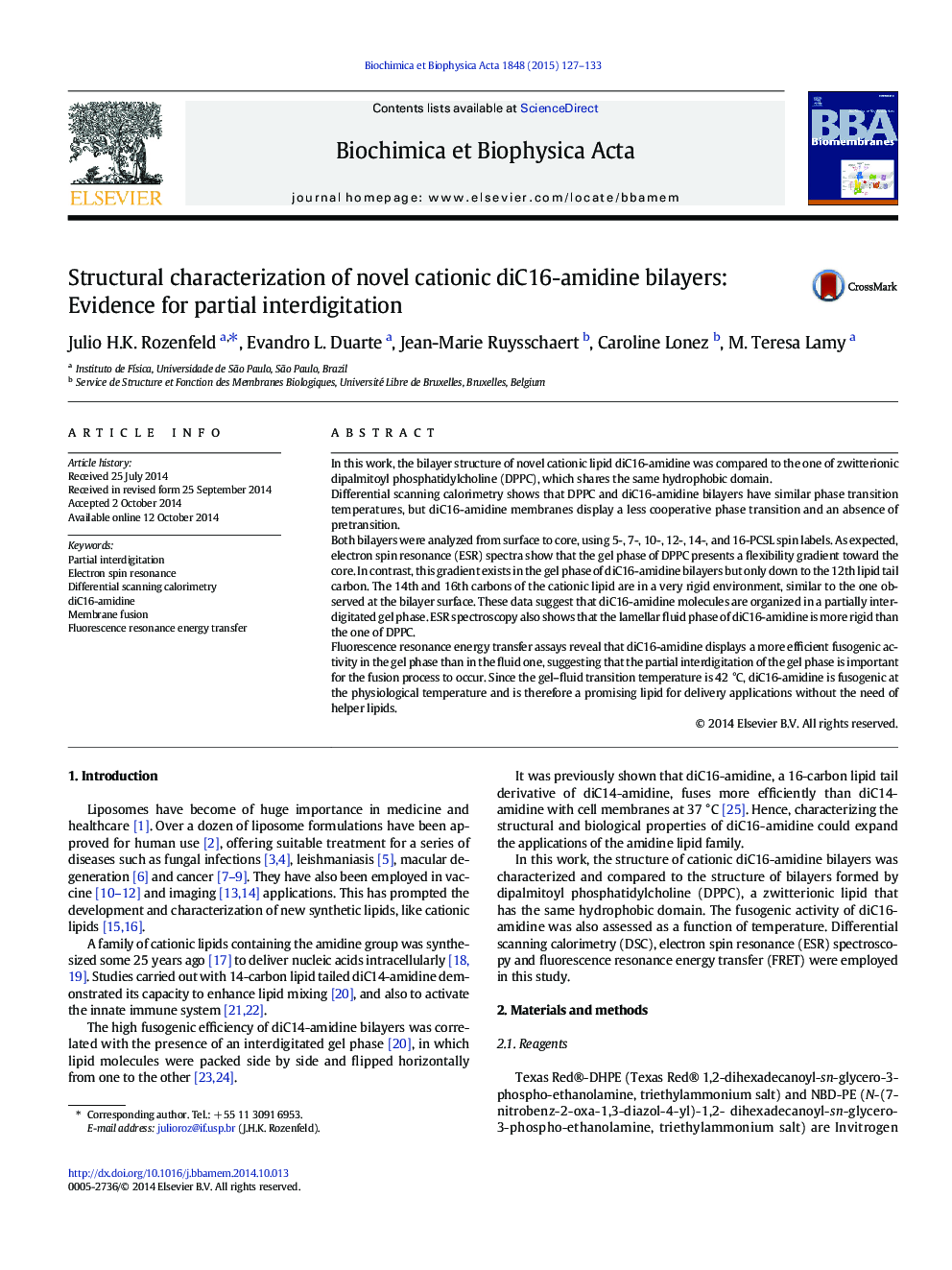| کد مقاله | کد نشریه | سال انتشار | مقاله انگلیسی | نسخه تمام متن |
|---|---|---|---|---|
| 1944138 | 1053185 | 2015 | 7 صفحه PDF | دانلود رایگان |
• Cationic diC16-amidine and zwitterionic DPPC bilayer structures are compared.
• Flexibility gradient is abolished at the core of gel phase diC16-amidine bilayers.
• Partial interdigitation explains the gel phase core rigidity.
• Molecular structure of diC16-amidine explains partial interdigitation.
• Partial interdigitation correlates with efficient gel phase fusogenic activity.
In this work, the bilayer structure of novel cationic lipid diC16-amidine was compared to the one of zwitterionic dipalmitoyl phosphatidylcholine (DPPC), which shares the same hydrophobic domain.Differential scanning calorimetry shows that DPPC and diC16-amidine bilayers have similar phase transition temperatures, but diC16-amidine membranes display a less cooperative phase transition and an absence of pretransition.Both bilayers were analyzed from surface to core, using 5-, 7-, 10-, 12-, 14-, and 16-PCSL spin labels. As expected, electron spin resonance (ESR) spectra show that the gel phase of DPPC presents a flexibility gradient toward the core. In contrast, this gradient exists in the gel phase of diC16-amidine bilayers but only down to the 12th lipid tail carbon. The 14th and 16th carbons of the cationic lipid are in a very rigid environment, similar to the one observed at the bilayer surface. These data suggest that diC16-amidine molecules are organized in a partially interdigitated gel phase. ESR spectroscopy also shows that the lamellar fluid phase of diC16-amidine is more rigid than the one of DPPC.Fluorescence resonance energy transfer assays reveal that diC16-amidine displays a more efficient fusogenic activity in the gel phase than in the fluid one, suggesting that the partial interdigitation of the gel phase is important for the fusion process to occur. Since the gel–fluid transition temperature is 42 °C, diC16-amidine is fusogenic at the physiological temperature and is therefore a promising lipid for delivery applications without the need of helper lipids.
Figure optionsDownload high-quality image (174 K)Download as PowerPoint slide
Journal: Biochimica et Biophysica Acta (BBA) - Biomembranes - Volume 1848, Issue 1, Part A, January 2015, Pages 127–133
